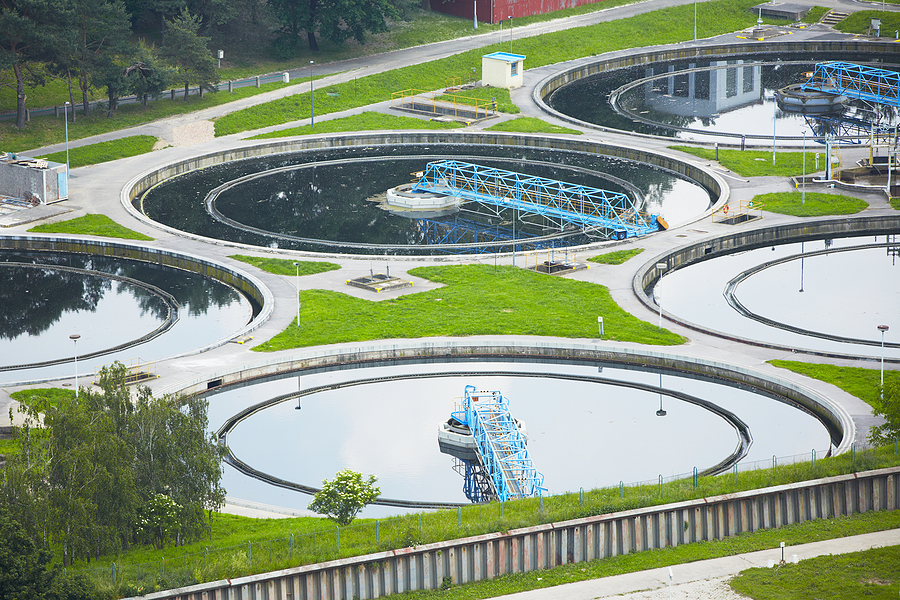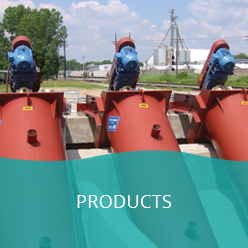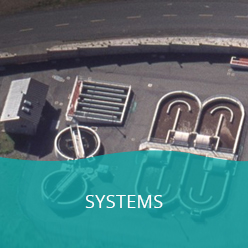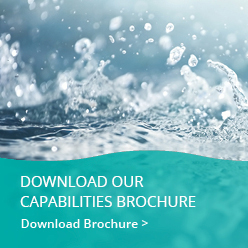Innovations in water treatment technology are important because of different factors that are continuing to change, like a growing population or climate change. Another thing that’s changing constantly is technology, which actually plays a huge role in water treatment. With technology, advancements and breakthroughs are continuing for sustainability, efficiency, and reliability across different industries, including the water treatment industry. At Lakeside Equipment, we have a full lineup of equipment that relies on these technological advancements to bring you the best and most innovative water treatment technology around. Let’s look more into the new innovations in water treatment technology for our current time.
Real-Time Monitoring and Smart Water
Smart Sensors and IoT (Internet of Things)
Sensors and IoT devices allow for data to be transferred through the cloud easily, keeping up with potential maintenance and other information in real-time alerts without the need to be there and inspecting in person. These sensors can be used to monitor different areas, such as pH, temperature, or turbidity.
SCADA Systems
SCADA, or Supervisory Control and Data Acquisition systems, are used to provide a centralized control system for water treatment facilities. This allows someone to access all of the information and control the system from anywhere, which provides convenience and efficiency.
Artificial Intelligence and Predictive Maintenance
Both predictive maintenance and AI work hand in hand to allow a system to automatically detect if any maintenance is needed by analysing data and sending updates in real time. This prevents the need for having someone on staff all the time to check the machine, plus it allows for problems to be addressed much quicker than it would be by manually checking for these potential problems.
Filtration Technology Advances
Membrane Bioreactors or MBRs
Membrane bioreactors provide ultrafiltration in a smaller form, so that it’s more efficient and space-saving. Ultimately, it’s the combination of ultrafiltration and biological treatment in one system.
Reverse Osmosis
Reverse osmosis is a water purification process that uses a semi-permeable surface to remove contaminants, which include dissolved salts, viruses, and bacteria. The water is forced through the membrane, which leaves behind the contaminants.
Nanofiltration
Nanofiltration is similar to reverse osmosis as it uses a semi-permeable membrane that has very fine pores that filter out dissolved substances. Oftentimes, nanofiltration is paired with and used with reverse osmosis in an attempt to filter out contaminants in a more efficient and sufficient way.
Biological Treatment Processes
Bioaugmentation
Bioaugmentation is the process of adding special microbial cultures into the water to dissolve specific pollutants and get rid of odors.
Moving Bed Biofilm Reactors or MBBRs
MBBRs use biofilm that’s attached to a part of the tank in order to remove pollutants by allowing the bacteria to grow on that area, instead of throughout the water and in the actual tank itself. This also uses a combination of both trickling filters and activated sludge.
Integrated Fixed Film Activated Sludge or IFAS
This combines both biofilm and sludge processes when it comes to water treatment. It uses the activated sludge and biofilm to help eliminate pollutants like bacteria and other microorganisms.
Water Reuse Systems
Closed Loop Recycling Systems
This process is where the water recirculates into the same area, which helps to avoid water waste while maintaining water quality, preventing issues like corrosion and microbial growth. Closed loop systems are great for industrial use or other uses where there is a lot of wate being used and transferred, so having the closed-loop system will allow for much less water waste than would originally be used.
Water Reuse
This is the process of treated wastewater being recycled and reused for different things, like cooling towers, industrial processes, and irrigation. This helps to avoid water waste, but it also reduces the demand for freshwater sources.
Zero Liquid Discharge or ZLD
This process is the process of not allowing any liquids to be removed, and instead, only solids are removed. Ultimately, this is good for those who have strict discharge regulations or for areas that deal with water scarcity.
Modular Treatment Systems
Modular Systems for Scalability
These systems, in particular, are used in areas where there is a need for flexibility and scalability. It allows for modules to be added or removed as necessary to keep up with specific demand, without dealing with the costs of changing up the entire system itself.
Mobile Treatment Plants
These are treatment plants that are ultimately able to be moved or transported and aren’t stuck in one spot. They’re great for areas in disaster, and they are scalable with the ability to be used as needed.
Sustainability and Low Energy Systems
Solar-Powered Water Treatment
Solar panels are becoming a huge part of energy efficiency and power in today’s time, whether on homes, for businesses, or in water treatment. Water treatment facilities are using solar panels to power their sensors, pumps, and full treatment units for smaller water treatment facilities.
Anaerobic Digestion
This process is using organic sludge which is broken down by microbes which produces biogas. This can then be used to generate electricity and heat, without the need to use typical energy systems, therefore saving on energy costs.
What These New Innovations Mean for Water Treatment Systems
When it comes to looking at these innovations in water treatment technology, there is a lot going on. There are many different avenues and different tactics that are being used for wastewater treatment and with the way that technology is advancing every day, we can expect to see a lot more of these advances in water treatment. Choosing the right water treatment system and additions can depend on a lot of different variables like what your treatment system is used for, where you’re located, and what is important to you.
Ultimately, these technology advances for water treatment facilities have made filtration, automation, and energy saving much easier across the board, which can overall help the process of the treatment facility immensely. If you’re looking for a new innovation to incorporate into your wastewater treatment facility, but you aren’t sure what’s best for your needs, contact us at Lakeside Equipment and we can help set you up with the best innovations ot bring your sustainability and efficiency into your facility.








